Tiny motherboard fits small budgets
Aug 29, 2007 — by LinuxDevices Staff — from the LinuxDevices Archive — 15 views Via's first motherboard in the tiny, 3.8 x 2.8-inch pico-ITX format appears to be available, and priced to appeal to device-builders with limited budgets. The PX10000G supports Linux and other x86 OSes, and ships with a reasonable complement of pin-header I/O cabling.
Via's first motherboard in the tiny, 3.8 x 2.8-inch pico-ITX format appears to be available, and priced to appeal to device-builders with limited budgets. The PX10000G supports Linux and other x86 OSes, and ships with a reasonable complement of pin-header I/O cabling.
digg this story |
Pico-ITX succeeds Via's nano-ITX form-factor, which in turn succeeded mini-ITX, arguably the first motherboard sized specifically for small form-factor personal computing. Each roughly halved total board footprint.
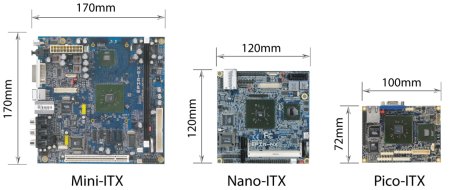
Via's incredible shrinking motherboard
(Click to enlarge)
Given the manufacturing- and component-constraints that accompany miniaturization, smaller motherboards tend to cost more than larger ones. Therefore, whereas mini-ITX boards typically sell for $200 or less, nano-ITX boards mostly have stayed north of the $300 mark.
Following this trend, pico-ITX boards could be expected to come in around $400 or more, at least initially. However, despite the form-factor having just been introduced in January of this year, the first pico-ITX motherboards are already showing up in the Web-stores of several board suppliers, priced below $300.
Via's PX10000G pico-ITX motherboard
Via launched the PX10000G in May of this year, positioning it as the “world's smallest mainboard.” It retained that title for a month, prior to June's launch of Via's Mobile-ITX “platform for PC/phone convergence.”
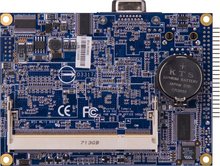
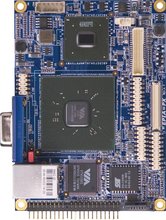

Via's PX10000G pico-ITX motherboard
(Click any view to enlarge)
Just slightly larger than a standard playing card, the Epia PX10000G is based on a 1GHz Via C7 processor. An SO-DIMM socket supports up to 1GB of DDR2 533 SDRAM memory. The 10-layer board integrates Via's VX700 “system media processor,” featuring UniChrome Pro II IGP 3D/2D graphics, MPEG-2/-4 acceleration, and WMV9 hardware decoding. Via notes that the board's graphics engine can support the high resolutions required for displaying HD DVD playback.
The PX10000G has precious few standard I/O connectors — just DB15 VGA and RJ-45 Ethernet ports. Instead, a full complement of pin headers supply additional standard PC I/O. Initially, the board appears to be shipping with various pin header cables to bring out digital video, USB, ATA, PS/2, and a second VGA port. Users will apparently have to raid older PC cases for audio I/O cables, firewire cables, serial cables, parallel port cables, power and reset buttons, and so on.
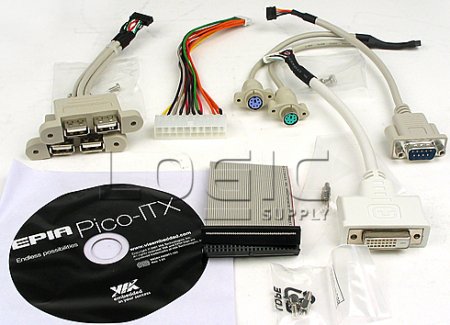
The PX10000G's I/O cable package
(Source: LogicSupply)
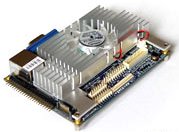 The first available PX10000G boards appear to be equipped with Via's “fansink” CPU and chipset coolers, as pictured at right. With a claimed typical power requirement of 11 Watts, the PX10000G seems like a great candidate for passive cooling, for example using heatpipes and a case with lots of surface area (i.e., cooling fins). Via has previously demonstrated such a case for pico-ITX boards, while another appears to be available as a ready-to-manufacture design from Chinese manufacturer Championsail.
The first available PX10000G boards appear to be equipped with Via's “fansink” CPU and chipset coolers, as pictured at right. With a claimed typical power requirement of 11 Watts, the PX10000G seems like a great candidate for passive cooling, for example using heatpipes and a case with lots of surface area (i.e., cooling fins). Via has previously demonstrated such a case for pico-ITX boards, while another appears to be available as a ready-to-manufacture design from Chinese manufacturer Championsail.

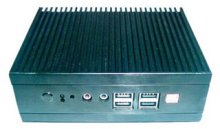
Via reference design case and possible future Serener GS-L08 case
(Click either image to enlarge)
An early review of the PX10000G found performance to be substantively the same as larger Via mainboards based on similar chips. And, as with Via's other boards, the challenges of compiling Via's closed audio and video drivers within the Linux kernel source tree could prevent less experienced users from enjoying the hardware's full high-definition, 3D, MPEG, and WMV capabilities (some description of what's involved can be found toward the end of this LinuxDevices article).
Lots more details about the PX10000G can be found in our earlier coverage of the board's introduction by Via, here.
Availability
The PX10000G appears to be shipping from stock from LogicSupply, Mini-ITX.com, and several other distributors catering to the embedded and hobbyist board markets.
This article was originally published on LinuxDevices.com and has been donated to the open source community by QuinStreet Inc. Please visit LinuxToday.com for up-to-date news and articles about Linux and open source.